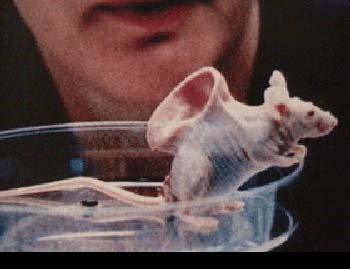Not really, no. Your counter-argument is "contractor-grade Cheez Whiz."
3d printing is integrated, incremental materials deposition. That's the definition. Your "cell" is your printing resolution. Which works fine for amorphous materials, but runs into real problems as soon as you're dealing with anything beholden to materials science.
Take a fishing rod. We'll skip the rings and cork and shit, we'll just talk about a long piece of fiberglass. It gets its strength from a bundle of glass fibers that run longitudinally and a matrix of polymer that binds them together. It's a "wood" analog - the fiberglass is a crude imitation of bamboo, essentially.
The glass fibers are microscopic in one dimension and macroscopic in another, running to "microns" and "multiple feet" respectively. The effective manufacturing methods for fishing rods involve aligning bundles of glass fiber on a jig, depositing matrix (spray or injection, not sure), using vacuum to remove air pockets, and then allowing the matrix to cure before polishing the assembly. You now have a stick of plastic and glass that performs better than a piece of bamboo, but not quite as well as hand-formed cane.
Let's take this process and turn it into 3D printing. Now our glass particles are microscopic in all dimensions. We have no stress matrix. Effectively, we've got a pile of sandpaper without the paper - glass particles in glue. We can heat-cure the assembly… but now instead of having a sturdy and resilient pole, you've got a glass rod. Or, more specifically, a glass-and-glue rod.
That's 3D printing - integrate down to zero, find the ideal particle for your nozzle size, and repeat it volumetrically. It's like making an English longbow by taking the yew tree, feeding it to the wood chipper, rendering it to sawdust and then forming the paste into an arc. You can't make a decent bow out of MDF, let alone plywood. Yeah, you can add all sorts of mathematical filigree but in the end, your maximum imodulus is your particle size. If all you've got are 1x4 legos, you're going to have a rough time building a broomstick.
A "How it's Made" marathon might do you some good - we have hundreds of different manufacturing processes because we're efficient, not the other way 'round.
As to the 3D printed organs:
The technology they're leveraging is based upon a handful of patents developed by the University of Washington in the mid '90s. I did a lot of post-grad work with them. Basically, Mat Sci figured out a way to create fibers so small that the body didn't reject them but so inert that they didn't cause mesothelioma like asbestos. They kind of work as a matrix for stem cell growth - we'd spray 'em down electrophoretically and then put some cultured tissue on 'em and they sort of grow in the shape of your matrix. At the time we were looking at wound care because skin tissue was more easily cultured and easier to acquire than, say, lung tissue but the principle is the same - make a "something" and coax cells into growing on it.
Yeah, you can "3D print" that matrix, after a fashion. We called it "spraying" back in '99. Of course, that's back when our 3D printer was called the STL lab and nobody cared… nowadays, you say you're "3D printing" and suddenly The Economist wants to come shoot videos.
Make no mistake - the tech hasn't changed. It was a questionable tech spinoff 15 years ago. The Vacanti Mouse was 17 years ago… how much has it changed the world?
